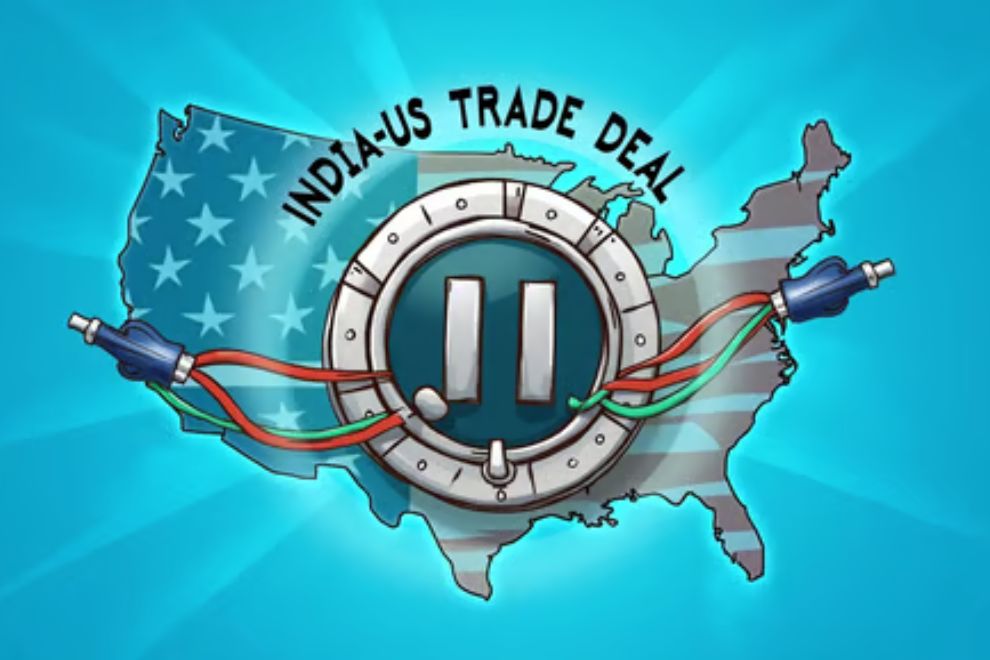The clock has run out on the July 9 deadline for the much-hyped India–US trade pact—and there’s no deal in sight. What seemed like a diplomatic certainty is now a commercial cliffhanger, and the fallout could affect everything from your next online shopping cart to your export order pipeline.
While negotiations continue in the background, the delay sends a strong signal: businesses, especially India’s MSMEs, must brace for impact. Here’s a breakdown of what’s at stake—and how to prepare.
💡 Insight: Why Indian Exporters Should Be Concerned
A stalled deal isn’t just political noise—it directly affects cost, speed, and strategy for Indian exporters.
🔺 1. Tariffs Could Return with a Vengeance
The US is reportedly considering reinstating tariffs up to 26% on select Indian goods. That’s a sharp blow for sectors like:
- Garments & Textiles
- IT Services
- Organic & Agro Exports
- Bulk Pharma Ingredients
Higher duties mean:
- Thinner profit margins
- Cancelled deals
- Pressure to cut costs or raise prices
📉 2. Buyers May Look Elsewhere
Trade uncertainty makes buyers nervous—especially smaller importers in the US. This could trigger:
- A slump in order volumes
- Delays in payments
- Shifting contracts to competitors in Southeast Asia
💸 3. Ripple Effects on Currency & Freight
Unresolved trade tensions often weaken domestic currency. If the Rupee dips, and global shipping firms sense risk, freight surcharges and conversion losses could pile up fast.
🛍️ What Indian Consumers Need to Know
Think you’re unaffected as a non-exporter? Think again.
Without a deal in place, import prices will likely rise, especially on:
- Mobiles & gadgets
- Medical equipment
- Luxury items
- Automobile components
This also means:
- Higher fuel and transport costs
- Delays in availability
- Price spikes across eCommerce platforms
That new phone, fitness tracker, or even your daily-use insulin may now come with a steeper price tag.
🧩 Strategy: How SMEs Can Shield Themselves from Tariff Turbulence
For Indian entrepreneurs and business owners, now’s the time to pivot—not panic.
✅ 1. Expand Market Horizons
Don’t tie your fate to one trading partner. Start exploring:
- African economies (Nigeria, Kenya)
- ASEAN (Thailand, Vietnam, Malaysia)
- Middle East (UAE, Qatar, Saudi Arabia)
✅ 2. Rework Your Supply Chain
Relying on imports? Consider nearshoring or domestic sourcing. It reduces shipping risk and offers better control if regulations tighten.
✅ 3. Reprice Smartly
Build tariff buffer margins into your cost structure. Offer transparent pricing to buyers and negotiate based on new reality—not old expectations.
✅ 4. Digital Compliance Is Key
Digitize all documentation and stay updated on customs policies. Delays in clearance due to missing paperwork could now be costlier than ever.
✅ 5. Government Help Exists—Use It
Don’t ignore the support systems:
- RoDTEP scheme: for tax & duty refunds on exports
- MSME Champions platform: for advisory and financial aid
- Interest equalization: on loans for eligible exporters
🔍 What’s the Road Ahead?
The stalled trade agreement doesn’t mean the end of diplomacy. Trade experts suggest a “mini-deal” might emerge in coming weeks to protect key sectors like pharma, defense tech, and renewable energy.
Still, businesses should operate on the assumption that higher tariffs and red tape are here to stay—at least for the near future.
The India–US trade breakdown isn’t just a headline—it’s a turning point. Whether you’re exporting spices to Seattle or selling makeup in Mumbai, your business is part of a global domino effect. Consumers will feel it in their wallets, and MSMEs in their bottom line.
The smart move now? Stay informed, stay flexible, and prepare like the deal won’t come tomorrow.




